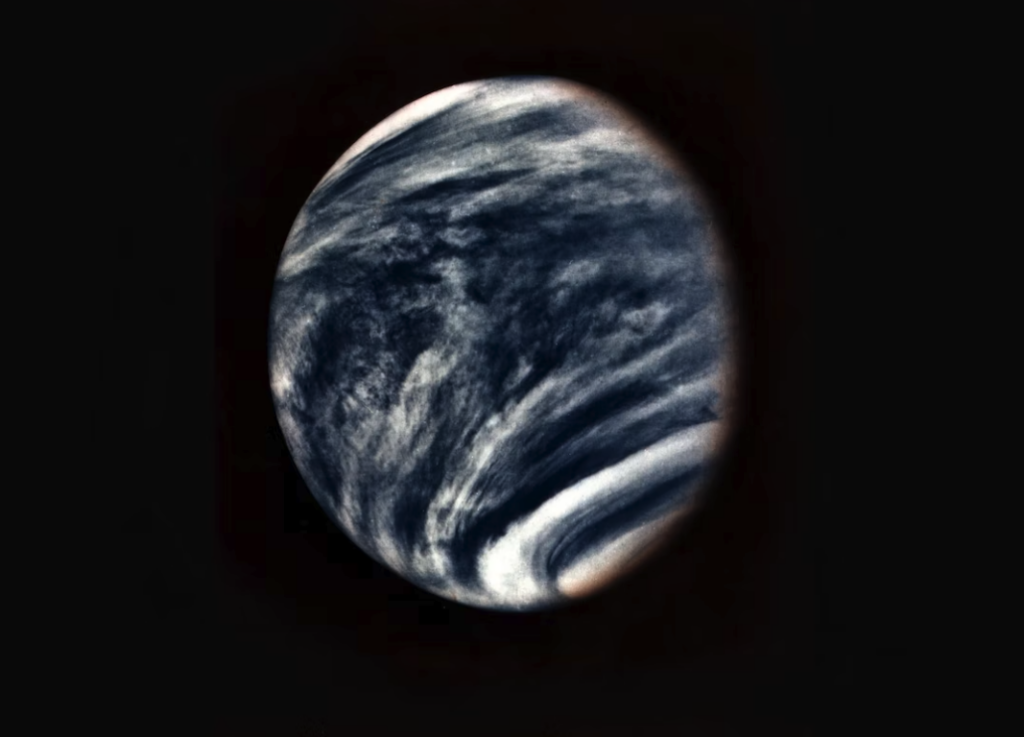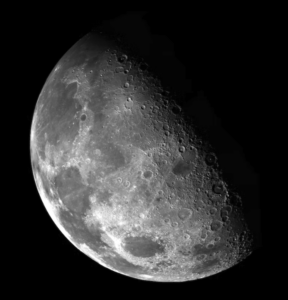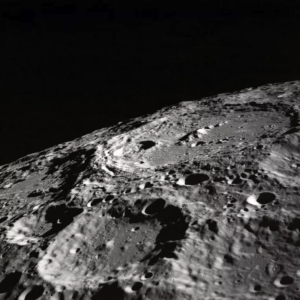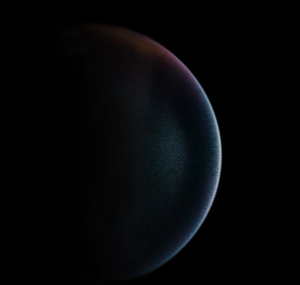How Many Moons Does Venus Have?
There are approximately two hundred and fourteen moons in our solar system. How many moons does Venus have? Of the two hundred and fourteen moons in our solar system, Venus has precisely zero moons.
Planetary Scientists continue to debate the probability that Venus had moons at one point in the distant past. Today, the commonly agreed-upon answer is that Venus doesn’t have any moons…right now.
Venus isn’t the only planet that doesn’t have any moons. Mercury and the dwarf planets Ceres and Makemake also have no moons.

How Many Moons Does Venus Have and What Other Planets Have Moons?
Six of the eight planets in our solar system have moons. Three of the five dwarf planets in our solar system have moons. (Pluto was reclassified from a planet to a Dwarf Planet in 2006.)
| Planets | Moons | Dwarf Planets | Moons | |
| Mercury | 0 | Pluto | 5 | |
| Venus | 0 | Eris | 1 | |
| Earth | 1 | Haumea | 2 | |
| Mars | 2 | Makemake | 0 | |
| Jupiter | 80 | Ceres | 0 | |
| Saturn | 83 | |||
| Uranus | 27 | |||
| Neptune | 14 |
How are moons formed?
We need to understand three differing moon formation methods to understand why Venus may lack moons.
- Co-formation: A moon is formed concurrently with the planet itself.
- A gas and “debris field” circle a world as it develops.
- The debris field undergoes Accretion. Particles come close to each other and stick together. The particles continue to cling to each other, becoming larger and larger structures.
- The larger and larger structures stick to each other until, eventually, a moon is created. New theories suggest that Earth’s moon formation may have occurred in a matter of hours.
- Capture:
- An object (like an asteroid or a moon) flies past a planet and is captured by the planet’s gravity. Once the planet’s gravity catches the moon/asteroid, the object spirals into rotation around the planet.
- Each planet (and moon) has a zone around it called the “Hill Sphere .” The Hill Sphere is the circular zone around the planet with a gravitational field with enough intensity to capture asteroids or a moon passing close to the planet.
- Two moons, Phobos and Deimos, orbit around Mars. Scientists believe that the Hill Sphere zone captured both moons.
- Elemental analysis of both moons reveals similarities to asteroids from the Jupiter asteroid belt, with Magnesium, iron, and silicate compositions detected.
- Mars soil contains silicon dioxide, ferric oxide, calcium oxide, and sulfur oxide.
- Differing elements indicate that the moons and Mars are different bodies. (Earth and its moon are very similar.)
- Phobos-Discovered in 1877 by Asaph Hall, the moon is nicknamed the “Doomed Moon.” Phobos loses approximately six feet (1.8 meters) of altitude every one hundred years as Mars’s tidal gravitational forces pull it closer and closer to the planet’s surface. Collision, or break up, is expected in approximately fifty million years.
- Deimos-Discovered in 1877 by Asaph Hall. Deimos is slowly moving away from Mars. In approximately one hundred million years, it will permanently leave Mars orbit.
- Japan’s MMX (Martian Moons eXploration) will launch in 2024 and reach Mar moon Phobos in 2025. The MMX will study both Phobos and Demios. MMX will land on Phobos and collect soil samples before returning the samples to Earth in 2029.
- Two moons, Phobos and Deimos, orbit around Mars. Scientists believe that the Hill Sphere zone captured both moons.
- Collision: Two objects colliding in space create a debris field. A moon is created in the debris field from the two objects. Billions of years ago, Earth was struck by an object the size of Mars. Scientists believe that the moon is a byproduct of that collision.

Why doesn’t Venus have any moons?
There are three lines of scientific debate about why Venus doesn’t have any moons.
- Venus had a moon, and the moon orbited away from the planet.
- When the solar system was in its infancy, Venus had a moon created in the same manner as Earth’s moon. (A Mars sized planet collided with it.)
- A second planet-sized structure collided with Venus. The impact of the collision caused the planet to reverse its rotation.
- The reversal in rotation caused the gravitational forces to change. The moon was able to spiral away from Venus.
- Venus never had any moons!
- Venus is so close to the sun that any moons that aren’t located within Venus’s gravitational “sweet spot” would be captured by the sun’s gravitational forces. A moon would need to find the “perfect location” to balance the gravitational forces of Venus and the sun.
- Gravitational conditions are very challenging for a moon to fall into Venus’s Hill Sphere.
- Venus is rotating backward, slowly, in a retrograde motion. There are three theories as to why Venus is spinning backward and rotating slowly.
- During the early phase of Venus’s formation, it was spinning in the same direction as the other planets. The planet was struck by a large object, like a planet. The impact causes the planet’s rotation to reverse.
- Core mantle friction can change the direction of a planet’s rotation over a long period.
- The atmosphere on Venus travels 60X faster than the planet. It’s a condition called Atmospheric Super Rotation. It takes four days for the atmosphere to circle the planet. It takes 243 days for the planet to make a single rotation.
- One full day (Named a “Sidereal day” on Venus), defined as the amount of time it takes Venus to complete one rotation on its axis, takes 243 days or 5,832 hours. One day on Earth takes approximately 24 hours.
- One whole year, defined as the time it takes Venus to complete one full orbit around the sun, takes 223 days.
- Venus’s slow rotation and retrograde motion make it nearly impossible for moons to enter and reside in Venus’s orbit.
- Venus had a moon billions of years ago, but the moon was absorbed by Venus after other moon-sized objects repeatedly struck the moon.

Why don’t we look for answers on Venus?
Humans have been lucky to travel to Earth’s moon to collect Regolith samples. After elemental analysis, scientists could pinpoint the elemental similarities between the moon and Earth. (Hint: they’re very similar!) The conditions on the moon, while harsh, don’t hold a candle to the conditions on Venus.
After twelve attempts, a spaceship landed on Venus. Venus’s surface conditions are less than ideal for any spacecraft. The spacecraft Venera 8 lasted for approximately 50 minutes before going offline. Extremely high temperatures (864°F/462°C), acid rains, and high atmospheric pressure ( 75 to 100% higher than sea level on Earth) create harsh conditions for any landing craft.
Today, all explorations of Venus are performed from space, looking down at Venus but not attempting to land on Venus.

Wrap-up
How many moons does Venus have? At first glance, the answer is simple. Venus has no moons. Delving deeper into the subject matter allows us to understand that while Venus has no moons today, it may have had one or two moons several billion years ago.
